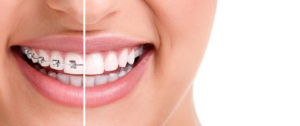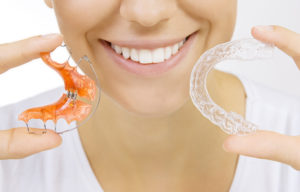Orthodontics is a word we often hear paired with the term “braces,” and some people may think that’s all orthodontists know how to do. While it’s true that braces do lead to a better smile, there are plenty of other health reasons to visit an orthodontist. If you have ever been unsure of what orthodontics is, Coppe and Sears Pediatric Dentistry and Orthodontics of Lexington is here to clear that up for you!

Orthodontics (from Greek orthos “straight or proper”; and odons “tooth”) is the specialty of dentistry that is concerned with the diagnosis, prevention and treatment of malocclusions (improper bites), which may be a result of tooth irregularity, disproportionate jaw relationships or both. These doctors are important to dental health because crooked teeth are harder to clean, and that puts them at risk for tooth decay and periodontal disease. This can also cause stress on chewing muscles, and that can lead to headaches, TMJ syndrome, and pain in the shoulders, neck, and jaw. Crooked teeth can be unsightly as well. These doctors undergo two extra years of education beyond the four years they have to take in dental school in an ADA-approved (American Dental Association) training program.
How do I know if I need to go to the orthodontist?
Some people think that you only need to go to the orthodontist if you get a recommendation from your dentist. While your dentist may suggest a visit to orthodontist office, you can also set up a consultation on your own. The Orthodontist will do a full evaluation, including x-rays, and recommend any treatment he or she believes could be beneficial to you.
Different types of “bites” will determine if you need orthodontic care or not:
- Overbite- this is the type of bite where the upper front teeth stick out or lie too far forward over the lower teeth; can create a “buck tooth” appearance
- Underbite- this is the type of bite where the lower front teeth stick out past the upper front teeth, or the upper teeth might be too far back; can create a “bulldog” appearance.
- Open bite- this type of bite creates a space in between the upper and lower teeth in the front when the back teeth are biting down.
- Crossbite- this is the type of bite when the upper teeth do not sit slightly in front of the lower teeth when biting down normally.
- Spacing- this bite is made of up spaces or gaps between the teeth as a result of missing teeth or teeth that just don’t fill up the mouth.
- Crowding- this is when there are too many teeth for the dental ridge to accommodate.
How would an orthodontist fix the bite?

There are many different types of orthodontic appliances, both fixed and removable, that can be used to help move the teeth, retrain the muscles, and affect the growth of the jaws. These generally work by placing gentle pressure on the teeth and jaws. The severity of your problem will be the determining factor in which orthodontic approach is likely to be the most effective.
- Braces- These are the most common form of fixed appliances. Braces consist of metal or ceramic brackets that are fixed to the teeth, primarily in the front. A wire runs through the brackets and is held in place by colored or clear elastics that are attached around the individual brackets. Once a month, the wire is tightened so that it can add tension to the teeth and gently moves them into their new position. They usually stay on the teeth from anywhere from a few months to a couple of years. They are much smaller and less noticeable than they have been in years past, and they can come in colors for children and there are clear options for adults.
- Fixed space maintainers- Sometimes, when a baby tooth is lost too early, a spacer has to be put in place to keep the space open for the adult tooth to come in. A band is fastened to the tooth next to the empty space, and a wire stretches to the tooth on the other side of the space.
- Aligners- These have gained popularity with adults in the last few years. These appliances are clear, plastic molds of your teeth that put pressure on the teeth to move them into place. They are removable and are normally taken out for eating, brushing and flossing and are invisible.
- Removable space maintainers- These serve the same function as fixed space retainers.They have an acrylic base that fits over the jaw with wire that branches down between teeth to keep spaces in them.
- Palatal expander- This appliance is meant to widen the upper jaw. It is a plastic plate that fits over the roof of the mouth. Pressure is applied by screws that forces the palate to open the length of the roof of the mouth, which widens the palatal area.
- Retainers- These are used usually after treatment to keep teeth from shifting back into their original positions. They are removable and can also be modified and used to prevent thumb sucking.
At Coppe and Sears, we believe oral health is important for your sense of well-being and overall quality of life. A beautiful and healthy smile can do wonders for your self-esteem, which can make a positive impact on your mental health as well. When you invest in orthodontic care for you and your family, you are investing in more than just the cosmetic benefits; you are investing in your family’s future by providing proper oral health that can last a lifetime. Contact us at 781.861.6120 to schedule an evaluation to see if you or someone in your family would be a good candidate for orthodontic care. We look forward to hearing from you!
